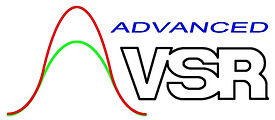
It is hard to find a milling machine worth anything these days, that does not have a brushless motor in its spindle. Brushless motor technology has also revolutionized other industries, from electric cars and trains to hand power tools.
We are the only builder of vibratory stress relief equipment in North America that uses brushless motors, which we use exclusively. Why use anything else ?
Learn more on our Equipment Comparison page.


Technical Library
The Advanced VSR Technical Library contains a selection of the most fundamental, pioneering work in the field. Most works were published originally by engineering societies and were often presented at symposiums or conferences. A few select works were direct submissions by the authors (typically university researchers) to the Technical Library. Brief summaries of the works focus and importance are shown as a guide.
EXPERIMENTS IN STRESS RELIEVING CASTINGS AND WELDED STRUCTURES BY VIBRATION is the oldest (1943) research paper on vibratory stress relief.
EXPERIMENTS IN STRESS RELIEVING CASTINGS AND WELDED STRUCTURES BY VIBRATION is the oldest (1943) research paper on vibratory stress relief.
VIBRATORY STRESS RELIEF: METHODS USED TO MONITOR AND DOCUMENT EFFECTIVE TREATMENT describes changes in response to vibration that occur due to stress relief, includes photos of workpieces, and a table of applications by industry. Also data showing a connection between peak growth and peak shifting is included.
Vibratory Stress Relief of Mild Steel Weldments is the definative study comparing resonant and non-resonant (sub-resonant) vibratory stress relief methods. Quoting from the abstract:
"The resonant frequency vibration had a more pronounced stress
redistribution as compared to the sub-resonant frequency vibration."